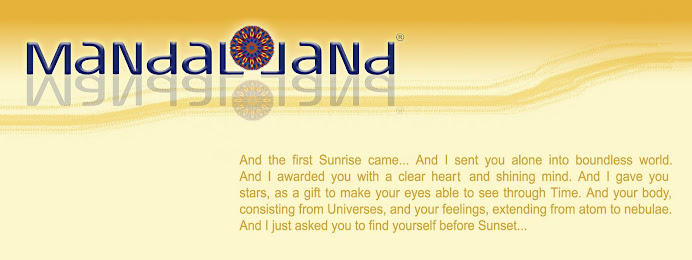The chakra word in Sanskrit
Chakras are energy (prana) centers in the structure of human body. They are located in certain areas of the body in form of prana energy vortices, which manage the circulation of prana and permeate all the substance of human. That’s why it’s so important pay particular attention to the chakras.
Working with chakras awakens mental capacity of human, gives understanding and vision of the own reality. It’s happens gradually of chakra awakening from muladhara to sahasrara. Chakras determine the path that everyone must pass in order to realize its maximum potential.
There are many meanings and interpretations of the chakras. In this article, I relied on the works of Swami Satyananda Saraswati (Bihar School of Yoga), as his knowledge based on years of practical experience.
And now we turn to each chakra separately.
MULADHARA CHAKRA (root) The muladhara word in Sanskrit means «basic foundation». Muladhara chakra is primary basis of individual human being. It’s a springboard to achieve higher levels of life understanding. It is enormous amount reservoir of the vital energy and related to the sexual aspect. Responsible for the instinct of self-preservation, immunity and longevity. Balanced muladhara chakra is guarantee of body energy stability. People with dominated influence of this chakra have extraordinary physical strength and endurance.
Location: perineum region
Symbolic image: deep red 4 petal lotus
SWADHISTHANA CHAKRA (sexual) Symbolic image: deep red 4 petal lotus
СThe swadhisthana word in Sanskrit means «own habitat». Swadhisthana chakra is the sexual center. Due the fact of located this chakra next to muladhara chakra, their quality are very similar. It’s connected with everything that brings pleasure through the senses: food, sex, conversation, etc. Responsible for communication and self expression. People with well shown swadhisthana are confident and have a special attraction.
Location: base of spine, coccyx (slightly above muladhara)
Symbolic image: red 6 petal lotus
Symbolic image: red 6 petal lotus
MANIPURA CHAKRA (solar plexus)
The manipura word in Sanskrit means «city of gems». Manipura chakra is the center of prana (energy) in the structure of human body. It’s a center, which allows a person to enter the direct contact with the subtle cosmic energies. Manipura radiates and distributes prana energy throughout the all body. Without this chakra people were be completely deprived of vitality. Manipura is the center of energy and dynamism. People with well shown Manipura are very active, socially stable and authoritarian.
Location: navel region
Symbolic image: bright yellow 10 petal lotus
ANAHATA CHAKRA (heart)
The anahata word in Sanskrit means «virgin» or «never got a blow». Anahata chakra represents the center of human consciousness. This chakra is accumulation of emotions. It’s responsible for the ability to create (art, poetry, music). Disclosure of this chakra leads to deep and lofty feelings: unconditional love, loyalty, acceptance. People with open anahata radiate a comprehensive love and total acceptance of all around into the World.
Location: heart region (center of chest)
Symbolic image: blue 12 petal lotus
Symbolic image: blue 12 petal lotus
VISHUDDHA CHAKRA (throat)
The vishuddha word in Sanskrit means «purification». Vishuddha chakra represents the speech center. It purifies and harmonizes all opposites. Responsible for the creativity in all areas of life. Disclosure of vishuddha chakra promotes compassion and leads to the reunification of all polarities: love - hate, kind – angry, good - evil. People with open vishuddha carry the world light and harmony. Typically, they are very sociable, easy to interact with the environment and have strong creative abilities.
Location: throat region (thyroid gland)
Symbolic image: violet 16 petal lotus
Symbolic image: violet 16 petal lotus
AJNA CHAKRA (third eye)
The ajna word in Sanskrit means «management». The most common name of ajna chakra is third eye. It symbolizes the gates to the source of life. Ajna chakra is the center of extrasensory perception and immediate transfer of thoughts from mind to mind. Through this chakra, people can communicate and understand each other without words. Responsible for the conscious perception, mental abilities and memory. Ajna opens the door to inspiration and creativity. Disclosure of ajna chakra leads to enlightenment.
Location: between the eyebrows (forehead center)
Symbolic image: silver blue 2 petal lotus
Symbolic image: silver blue 2 petal lotus
SAHASRARA CHAKRA (crown)
The sahasrara word in Sanskrit means «lotus flower». Sahasrara is the highest spiritual center, which brings all chakras together. It’s a center of the cosmic consciousness and boundless source of knowledge. Sahasrara connects people with higher levels of existence. Through this link, you can get any answers. In fact, sahasrara chakra is infinite as the Universe itself. The scope of its impact lies beyond the words – it’s the scope of answers without questions.
Location:: crown of head
Symbolic image: 1000 petal lotus, all colors include
Symbolic image: 1000 petal lotus, all colors include

.





I 've been learn and practice about the phrana (inside energy).. but long time ago when I was school boy.
ReplyDeleteIts about to treat our breathing combine with physical activity and focusing our mind. And the result is we will have internal power that could affecting the body health and sometimes use for self defense. Am I right..?
There are lots of different practices and meditations with prana energy. All they are very good for health, mind and conscious. But before practice you need properly know all details to protect yourself of abruptness. Wish you luck.
ReplyDeleteGreat Information, Simple and well explained.Keep it up.
ReplyDelete